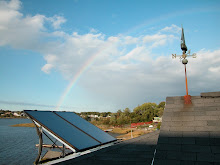When you run hot water from your faucet, how long does it take for the water to get, well, hot? If you said anything other than instantly, you could be wasting thousands of gallons of water each year. If you have a well, you are paying for electricity to pump it, paying to heat it, and possibly paying for salt to soften it. If you have municipal water, you are paying for the water, paying to heat it, and paying the sewer bill based on your water usage. Depending on how long you have to wait for hot water to reach the faucet, you are wasting 14,000 to 38,000 gallons of water each year, which means you have to heat the same amount of water to replace it. Water, energy and your hard-earned money down the drain, wasted.
A hot water recirculation system works off of an aquastat and/or a timer to keep hot water available at the faucet so none is wasted waiting for it to get hot. The timer is important to avoid recirculating at hours when people are sleeping or at work. There are two types of hot water recirculation systems, active and passive. An active system is generally installed during construction of a home. An aquastat activates the recirculation pump which returns the cooled-off water at the faucet back to the water heater through a separate recirculation pipe to be reheated thereby maintaining hot water at the faucet. This type of system is expensive to install and probably isn't feasible as a retrofit option.
A passive system uses the cold water piping as the recirculation pipe back to the water heater. One method uses a pump which mounts to your water heater and operates via a timer to recirculate the hot water at low volume through a thermostatic diverter valve mounted under the farthest sink. Though this method certainly saves water, it uses more energy because as the water cools off in the pipes it must again be reheated. Another method is to mount the recirculation pump under the farthest sink and have it operate via a thermostatic sensor. When it senses the water cooling off in the pipes, it turns on the pump and sends the cool water back to the water heater to be reheated. This saves more energy as it doesn't recirculate constantly like the water heater mounted pump, but still loses heat through the piping. Another method is to have a recirculation pump mounted under remote sinks which operates via a push button on the counter. When you want to use hot water, you activate the pump with the button. The water that would normally be allowed to run down the drain is returned back to the water heater. A sensor shuts off the pump when hot water arrives at the faucet. This is the most efficient method of hot water recirculation. You get bonus points for using a DC pump powered by a PV panel.
The cost of a passive recirculation system as about $300. The installation is not too difficult, but if you need a plumber to do it add another $200-$300. Depending on your water and energy costs and whether you install the system yourself or hire a plumber, your payback time should be one to three years. Sounds like another no brainer to me.
Thursday, March 12, 2009
Subscribe to:
Posts (Atom)
